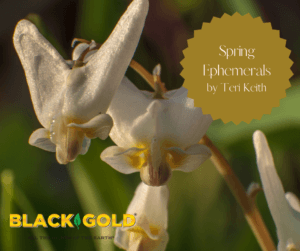
I always feel like the Winter Solstice is an emotional turning point that comes each year when it’s needed most. The world stops darkening and the sun begins its long climb back to summer. It is accompanied by winter festivities that celebrate (directly or indirectly) the great turnaround. When our kids were small, spring hikes were a yearly occurrence. Nearby nature preserves, state parks and even city parks and secluded woody hollows sometimes had amazing displays of spring wildflowers. At some point I decided we could have a spring wildflower display in our own yard. After all, how hard could it be? Those things are natives and grow everywhere!
Those wildflowers, known as spring ephemerals, are a somewhat unusual, but time honored, gang of plants. They are perennial woodland plants that are mainly found in the eastern U.S. and Canada. They emerge quickly in the spring, when sunlight warms the soil, but leaf canopies have not yet cut off the sunlight. Ephemerals quickly bloom and produce seed. Plant stems and leaves will wither back to their underground parts (roots, rhizomes or bulbs) for the remainder of the year. Fallen leaves provide mulch for the plants and the leaves break down, enriching the soil and provide a food base for detritivores and potential pollinating insects.
Here are some common native spring ephemerals:
- Spring Beauty
- Cutleaf Toothwort
- Dutchman’s Breeches
- Twinleaf
- Bloodroot
- Celandine Poppy
- Shooting Star
Spring ephemerals are woodland plants that live around the base of deciduous hardwood trees. Soils tend to be rich in organic material with a crumbly texture. Dry, sandy soils or heavy wet clay soils a generally unsuitable for ephemerals, except shooting stars that need well-drained soil.
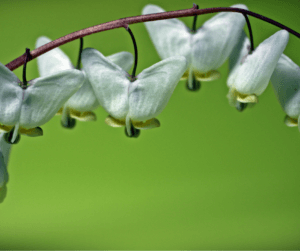
I like to plant in fall, while the soil is still warm. Add a top dressing of compost, plus a layer of shredded leaf mulch. Depending on the species and the nursery, you may be planting seeds, bulbs, corms or starts. If there are trees around your beds, plant them near the base. You plants are unlikely to flower the first year, just take care of them and they will do the rest.
Bearing in mind that your ephemerals will spend only a short time entertaining you, you will need to plant some companion plants. Shade or semi shade perennials are a good bet.
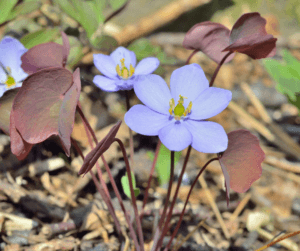
Still, finding a good site for your new ephemeral garden may be a challenge. Try to find a location that has partial sun/shade in early spring. Do not worry about existing trees or shrubs. By the time they leaf out, your ephemerals should be done flowering for the year. Most of the plants mentioned above like a rich neutral to slightly acidic soil. If you have moved into a new housing subdivision, you may be forced to deal with clay subsoil that will require amending with compost and fertilizer before you can plant. Please consider the Black Gold™ line of soil amendments and compost products for your needs.
Soil drainage is another important factor. Virginia bluebells can tolerate a wet site, while others like shooting star quickly die off on poorly drained sites. Digging sand into a poorly drained area may help a bit, but for a really wet soil, you should either apply some sort of positive drainage method or find another site.
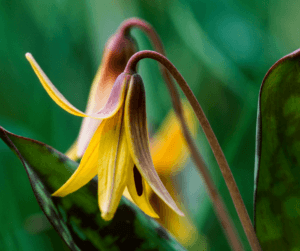
Some plants can be readily started from seeds, corms, rhizomes or bulbs. Rue anemone starts well from seeds and spreads by reseeding. Others like trillium are best started by dividing an existing plant (no poaching). They can be started by seed, but it may take a few years to flower.
Finally, you do not want to be feeding the local small mammal population more than you already are. Rabbits, chipmunks, mice, voles, squirrels and others can be a real threat to your ephemerals. A few years back, we tried growing a lady’s slipper. It did not last the summer before being consumed. The same occurred with a Helleborine orchid. Spring beauty and trillium are favored sources of food, but most of the plants on our list have toxic stems, roots or foliage.
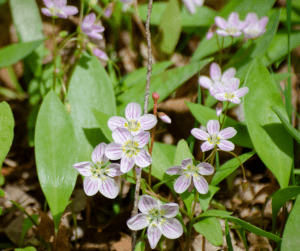
Of course you want to know how we made out with our own ephemerals. The orchids were a flop. So were shooting stars and trout lily. We planted trillium obtained from a local nursery under an oak-leaved hydrangea and snowball bush and they do reasonably well in both locations. Celandine poppy and Dutchman’s breeches also do well under the snowball bush. Virginia bluebells have done very well everywhere we planted them. Of course we still visit the woods in spring, but we do have a small spring show of our own.

